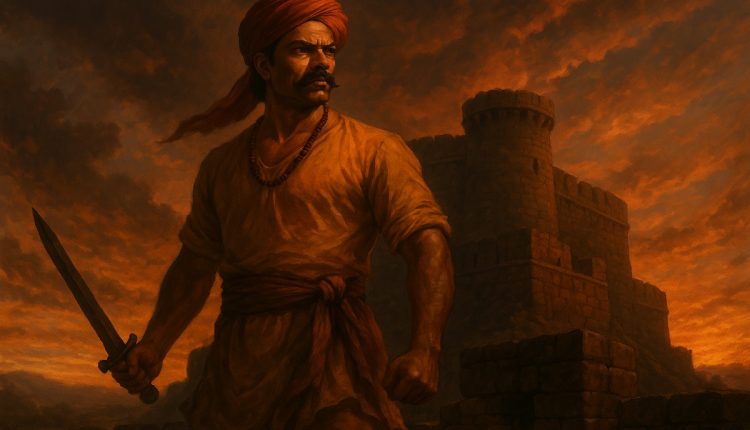When we speak of India’s freedom struggle, names like Mangal Pandey and Rani Lakshmibai often dominate the conversation. But decades before the 1857 uprising, a brave chieftain from Tamil Nadu stood up against colonial tyranny. His name was Puli Thevar—a lion-hearted warrior whose resistance against the British East India Company and the Nawab of Arcot marked one of the earliest acts of defiance in Indian history.
Who Was Puli Thevar?
Puli Thevar was a Palaiyakkarar (Poligar) or feudal chieftain of Nerkattumseval, a small principality nestled in the Tirunelveli district of modern-day Tamil Nadu. He lived during the mid-18th century, a time when the region was grappling with the political vacuum left by the fall of the Madurai Nayaks.
-
The Nawab of Arcot, supported by the British, began imposing control over southern Tamil Nadu.
-
Puli Thevar emerged as a symbol of resistance, refusing to pay taxes or tributes, and challenging the growing foreign influence.
The Warrior Who Resisted British Power
Between 1750 and 1767, Puli Thevar organized a robust resistance movement using:
-
Guerrilla warfare tactics
-
Support from local tribal groups
-
The natural defenses of the Western Ghats
He fought against the combined forces of the British East India Company, the Nawab of Arcot, and their local allies. Despite limited resources, Puli Thevar’s military acumen and strategic use of terrain helped him successfully defend his fort at Nerkattumseval multiple times.
Key Highlights of His Rebellion:
-
He built a network of alliances with other rebellious Palaiyakkarars.
-
Maintained control over his region for nearly two decades.
-
Delayed British expansion in southern Tamil Nadu significantly.
Why His Story Matters
What makes Puli Thevar’s resistance extraordinary is the timeframe. His fight against foreign rule took place nearly a century before India’s First War of Independence (1857).
-
He wasn’t just a local chieftain fighting for power—he was a visionary who rejected colonial dominance at its root.
-
He believed in self-governance and the dignity of local rule, values that would later become cornerstones of India’s freedom movement.
Legacy and Recognition
Although Puli Thevar’s rebellion was eventually subdued, his legend lived on:
-
Folklore and ballads across Tamil Nadu still recount his courage.
-
Textbooks in Tamil Nadu celebrate his role as one of the first freedom fighters of India.
-
The Tamil Nadu government has honored him with statues, memorials, and historical retrospectives.
Visit Tip: You can explore Nerkattumseval Fort, where his legacy is preserved through local stories and cultural events.
Cultural Impact
-
Films, plays, and local stage dramas in Tamil Nadu frequently revisit the life of Puli Thevar.
-
He is often depicted as a folk hero and symbol of Tamil resistance.
-
His leadership inspired later warriors like Veerapandiya Kattabomman and Maruthu Pandiyar in the 18th and 19th centuries.
Relevance Today
In an era of colonization, corruption, and feudal politics, Puli Thevar stood for integrity, self-rule, and resistance. He didn’t wait for a movement to begin—he became the movement. His story serves as a reminder that freedom isn’t always won in famous battles—it’s often forged in forgotten forts and silent sacrifices.
Final Thoughts
Puli Thevar may not yet be a household name across India, but in the annals of Tamil Nadu’s history, he is a rebel remembered with pride. His courage laid the foundation for future resistance and deserves a place in India’s national narrative of freedom.
“Before Kattabomman roared, before 1857 sparked, Puli Thevar stood alone—but he stood firm.”


Comments are closed.